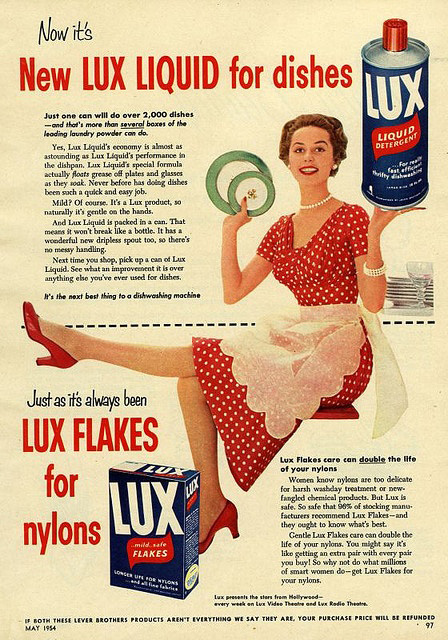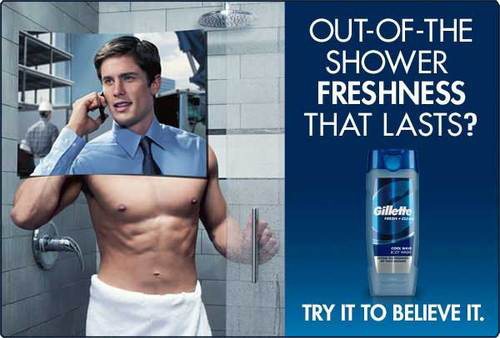Advertising as mirror or mould of gender representation(ジェンダー表現の鏡、あるいは型枠としての広告) 英語コミュニケーション学科
2022年03月04日
ゼミ/授業名:Germainゼミ
One of the main challenges faced by the creators of advertisements is the time limitation of most forms of advertising. TV commercials are around 1 minute long, posters are just one image and YouTube ads need to deliver their message in 5 to 15 seconds. In order to communicate as much information as possible in as little time as possible, advertisers often use stereotypes. Examples include: young people like to have fun, men are strong, grandma is a great cook, salarymen like beer, etc.
広告の作成者が直面する課題のひとつは、多くの広告の時間の制限です。 テレビコマーシャルは約1分、ポスターは1つの画像、YouTubeの広告は5〜15秒でメッセージを配信する必要があります。 できるだけ短い時間でできるだけ多くの情報を伝達するために、広告主はしばしばステレオタイプな表現を使用します。 例えば、若者は楽しむのが好き、男性は強い、おばあちゃんは料理が上手、サラリーマンはビールが好き、などです。
The question we discuss in ゼミ class is whether advertising creates and promotes stereotypes, or whether it only uses some stereotypes that are already present in society.
ゼミの授業では、「広告がステレオタイプを作りだし、促進するのか」、それとも「社会にすでに存在するいくつかのステレオタイプを利用するのか」を話し合います。
Some of the stereotypes most often used by advertisers are gender stereotypes. These stereotypes are an obstacle to gender equality, as they tend to promote discrimination based on gender. Women in advertisements are usually stereotyped in four ways: the wife, the mother, the object of desire, and 'the washing machine'.

Advertising tends to show us women working mostly in the home and rarely in so-called masculine activities. For example, in many old car advertisements, women were just 'decoration', they attracted the male eye to made him want to buy the car, This has changed in recent years, as the image of the woman as the 'housewife' is becoming less important, being replaced by the image of the 'superwoman' who can do everything. Women in advertisements are now shown as working during the day in order to earn a living, and then taking care of the home after work. This representation remains problematic, because women still have to take care of the home and children, most often alone.
Of course, men also suffer from stereotypical gender representation in advertising. Images of hyper-masculinity and toxic masculinity are commonly used. Men also see their role as fixed: they must be strong, muscular, handsome.

In addition, when advertisements for household products feature a man instead of the traditional sexist cliché of the housewife, it is very common to see the man not knowing how to use the product or how to clean something. The product is then presented as easy to use; so easy that even a man can use it.
From a certain point of view, it is clear that advertising promotes a model to be followed in terms of behaviour and physical appearance. In that sense, advertising influences, or moulds, society. On the other hand, if we consider that advertising changes quickly, and needs to remain at the forefront of cultural trends, we can also conclude that it is an agent of societal change, and this is most clearly seen in the ways advertising represents gender.
ある観点から見ると、広告が行動と外観から従うべきモデルを宣伝していることは明らかです。 その意味で、広告は社会に影響を与え、あるいは型にはめます。 一方、広告が急速に変化し、文化的トレンドの最前線にとどまる必要があると考えると、広告が社会変化の代理的存在だと結論付けることもできます。これは、広告がジェンダーを表す方法で最も明確に見られます。
担当教員:Germain Mesureur
 Using Advertising (広告), and the language of adverts and CMs, to learn English, understand other societies and the ways advertising influences them and us. My main focus is on the representation of gender in advertising, and how that affects men and women's perception of themselves and others.
Using Advertising (広告), and the language of adverts and CMs, to learn English, understand other societies and the ways advertising influences them and us. My main focus is on the representation of gender in advertising, and how that affects men and women's perception of themselves and others.
